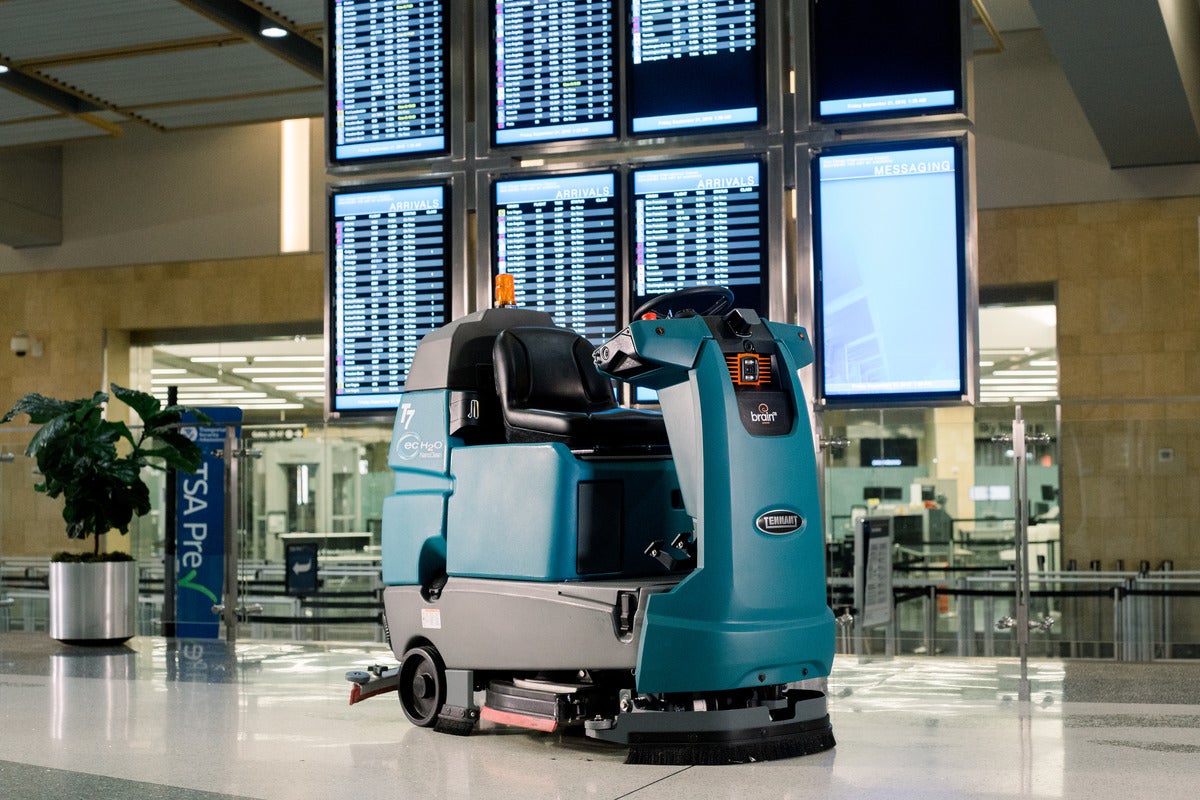In recent years, in response to serious industry turbulence, we’ve witnessed a remarkable transformation in how European airports manage their operations. The aviation sector has faced unprecedented challenges, from global economic fluctuations and stringent environmental regulations, to the seismic disruptions caused by the Covid-19 pandemic and its aftermath.
These factors have compelled airports across Europe to re-evaluate traditional approaches and embrace automation as a strategy to future-proof their operations.
One of the most pressing issues facing the European aviation industry is workforce availability, with many airports struggling to maintain adequate staffing levels. This challenge is particularly acute for some regional airports, which often operate on tighter budgets and in more competitive markets.

These factors have helped create a perfect storm that is accelerating innovation in the sector. Airports now realize that to remain competitive and efficient, solutions such as autonomous robots can play a pivotal role.
According to recently released internal data from Brain Corp, the use of robots for cleaning in European airports – powered by its operating system – grew by 96% year-on-year between Q2 2023 and Q2 2024. These robot fleets covered over 270 million square metres across Europe this year alone.
Airport automation: the challenges and considerations
Autonomous robots offer tangible benefits that are key to sustaining future airport operations. However, integrating automation into existing systems requires careful consideration to mitigate potential challenges.
Preparing staff for robotic integration is essential and can vary across the continent due to cultural attitudes, existing skills, and workplace norms. Airports may need to develop worker training programmes that cover both technical aspects and potential scepticism or reluctance there might be to work alongside robots. This could involve addressing language barriers and promoting effective task handoff between humans and machines.
Collaborating with knowledgeable technology providers or integrators helps with the effective implementation and maintenance of robotic systems. Those with high levels of regional expertise can offer insights into local market conditions, regulations, and cultural factors. Effective partnerships also ensure timely technical support, reducing system downtime and operational disruptions.
Modern robots are equipped with advanced software and sensors that can provide valuable information about an airport’s cleaning operations. When analysed thoughtfully, these insights can help airport operators enhance efficiency and implement ongoing improvements to passenger experiences.
Given the highly regulated nature of the aviation industry, ensuring compliance with relevant standards is crucial, particularly data protection guidelines such as GDPR within the EU. Understanding these requirements upfront helps prevent costly disruptions later.
Operational sustainability and the future airport
Automation in airports is playing an increasingly important role in reducing environmental impact. Autonomous robots, designed for energy efficiency, can minimise water, chemical, and energy usage by optimising tasks such as floor cleaning with advanced software.
These systems can operate around the clock, including during off-peak hours to decrease energy consumption and use precise amounts of cleaning solutions, reducing chemical waste. Reducing the overuse of resources supports sustainable practices that align with Europe’s stringent environmental regulations and carbon neutrality goals.
Additionally, automation technologies offer data-driven insights into resource usage, allowing airports to track and improve sustainability metrics over time. This data can help identify energy-intensive areas and drive targeted efficiency measures.
Looking ahead, it’s clear that the trend towards automation in European airports is accelerating. For most airports, the goal is not to replace human workers, but instead create integrated teams able to operate efficiently in a dynamic and evolving industry. The future airport will likely be a place where robots handle repetitive, labour-intensive tasks, allowing human staff to be used more strategically, providing enhanced customer service and solving more complex problems.
The rapid adoption of autonomous robotic solutions being seen in European airports represents more than just a passing trend – it is an evolution driven by the challenges facing the aviation industry at large. As these technologies continue to demonstrate their value through increased efficiency, consistency, and cost-effectiveness, their use will undoubtedly expand further.
Moving forward, the key to success will be balancing automation with human expertise to create airports that are not only more efficient but also more responsive to the needs of their most important users – travellers.




